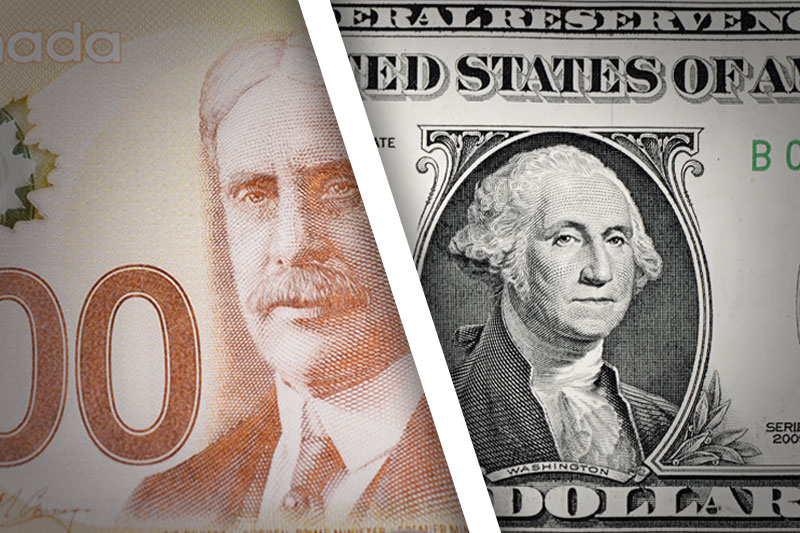Investing.com’s stocks of the week
Investing.com - The U.S. dollar hit session lows against the Canadian dollar on Thursday, after Canadian retail sales data for October beat expectations, while stronger-than-forecast U.S. third quarter growth data also bolstered risk appetite.
USD/CAD hit 0.9876 during early U.S. trade, the session low; the pair subsequently consolidated at 0.9883, dipping 0.05%.
The pair was likely to find support at 0.9831, Tuesday’s low and resistance at 0.9894, the session high.
The Canadian dollar was boosted after official data showed that retail sales rose 0.7% in October, beating expectations for a gain of 0.1%.
Core retail sales, which exclude automobile sales, rose by a seasonally adjusted 0.5% in October, compared to expectations for a 0.2% increase.
Meanwhile, in the U.S. revised data showed that gross domestic product increased at a seasonally adjusted annual rate of 3.1% in the three months to September, up from a preliminary estimate of 2.7% and above expectations for growth of 2.8%.
In a separate report, the U.S. Department of Labor said the number of people who filed for unemployment assistance last week rose by 17,000 to 361,000, compared to expectations for an increase of 13,000 to 357,000.
Investors remained cautious amid growing doubts over whether a deal to avoid the U.S. fiscal cliff will be reached ahead of the January 1 deadline, fuelling concern that automatic tax hikes and spending cuts will be triggered.
The loonie, as the Canadian dollar is also known, was lower against the euro, with EUR/CAD rising 0.31% to 1.3118.
The U.S. was to data on manufacturing activity in Philadelphia as well as a report on existing home sales later in the trading day.
USD/CAD hit 0.9876 during early U.S. trade, the session low; the pair subsequently consolidated at 0.9883, dipping 0.05%.
The pair was likely to find support at 0.9831, Tuesday’s low and resistance at 0.9894, the session high.
The Canadian dollar was boosted after official data showed that retail sales rose 0.7% in October, beating expectations for a gain of 0.1%.
Core retail sales, which exclude automobile sales, rose by a seasonally adjusted 0.5% in October, compared to expectations for a 0.2% increase.
Meanwhile, in the U.S. revised data showed that gross domestic product increased at a seasonally adjusted annual rate of 3.1% in the three months to September, up from a preliminary estimate of 2.7% and above expectations for growth of 2.8%.
In a separate report, the U.S. Department of Labor said the number of people who filed for unemployment assistance last week rose by 17,000 to 361,000, compared to expectations for an increase of 13,000 to 357,000.
Investors remained cautious amid growing doubts over whether a deal to avoid the U.S. fiscal cliff will be reached ahead of the January 1 deadline, fuelling concern that automatic tax hikes and spending cuts will be triggered.
The loonie, as the Canadian dollar is also known, was lower against the euro, with EUR/CAD rising 0.31% to 1.3118.
The U.S. was to data on manufacturing activity in Philadelphia as well as a report on existing home sales later in the trading day.
